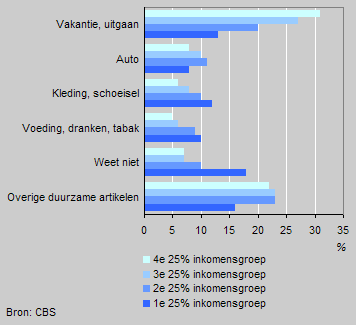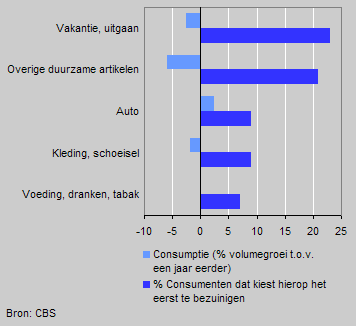Higher incomes quicker to cut back on luxuries

In the first nine months of 2003 Dutch households were thriftier than the year before. Corrected for price changes, consumption was down 0.9 percent on the first three quarters of 2002.
Higher income groups mainly cut back on luxury items, whereas low income groups spent less on the primary necessities of life.
Luxuries or necessities?
The spending cuts preferred by consumers turn out to differ according to income level. Consumers on a low income state they cut back on the primary necessities of life. Consumers with more money to spend tend to economise on luxury items, holidays and going out.
Low incomes spend less on necessities
Consumers on a low income indicate they spend less in supermarkets. They claim to reduce spending on food, beverages and tobacco first, twice as often as the higher income groups. They also indicate they will economise on clothes more often when their income drops.
Spending cuts when income drops

The preferred economies of the higher income groups are holidays, going out and other durable goods. One explanation is that higher income families spend much more on luxury goods and services to begin with, and can therefore more easily cut back on them.
Remarkably, whatever their income, consumers will not readily economise on their cars.
Spending cuts when income drops and consumption rises

Low incomes don’t know where to economise
Consumers on a low family income often do not know where to reduce spending when their income falls. Nearly one in five consumers with an income in the lowest 25 percent group cannot answer the question how they prefer to reduce their spending. This is almost three times as many as consumers with incomes in the two highest income brackets.
Bastiaan Rooijakkers
Source: StatLine